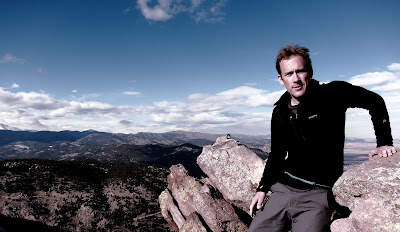
With exactly one month of winter remaining, it's not too early (is it ever?) to get excited about long rock climbs in the mountains. Alpine rock routes, for me, are the most enjoyable climbs. And are even more-so when you get to mix in some logistical challenges, difficult, gymnastic movement, snow or glacial considerations, and an unclimbed wall. Having perfect stone doesn't hurt either.
In the 'spirit of the stoke' here's a video I scrapped together with footage and photos taken on such a climb last summer, a route my friend named "Fire on the Mountain" - Sloan Peak, North Cascades.
Double Click for Full Screen
The above was written by my friend Rad Roberts last spring, acutely distilling an alpinist's desire for exploration into one line of email. But desire is a foe ill-suited to stormy Northwest weather. So after a summer of missed chances, a forecasted few days of sun was all we needed to put plans into action.
We left Seattle at 5AM, en route to Sloan Peak (7,800'). The Southwest face was 1,500' of solid-looking stone in an accessible location. It had never been climbed...
Rad so strongly wanted to launch into the unknown, so I let him take the first pitch, a mossy chimney to who-knows-where. From atop the chimney progress slows, but movement is interjected with whoops of joys and grunts of desperation. I prepare to get sandbagged. Instead of the vegetated corner, Rad's following a line of previously-unseen --and overhanging-- splitter cracks. Forty more feet and he's off belay, 15 meters of slack pulled up, and I'm on.
I reacquaint myself with backpack-clad squirming, lean a right shoulder into the wall and pray the rubber on my comically blown-out shoes will adhere for a few more moves. The climbing is phenomenal, and well-protected. I trundle some blocks and barely hang on between desperate finger locks.
We trace a line up thin cracks and delicately-featured rock. Dodging left around a huge roof, Rad dances up a right-facing dihedral, belaying along a major ledge system 400' up.
We survey our situation: time, water, location... and I'm off. With another steep unknown wall looming, it's time for some speed.
The rock here is even cleaner. My pitch flows without hesitation. This is why we climb. Reach up for the jam, stem out to the knob, 3 more moves to a stance and gear...
At 50 meters I ease onto a pedestal, and I'm staring at a rusty Lost Arrow Piton! We suspect someone had come across the long ledge which splits the face and also belayed atop the pillar.*
Rad's lead starts out with what we'd expected to be 30' of unprotected overhanging face climbing. It was actually 31 feet. But instead of no protection, he found a hidden cam placement, and was able to sling a protruding granite knob. The rock is unlike any I've seen in the Cascades. Huge fins, dikes, and scoops facilitate steep face climbing... and set up Rad for the sting in the tail, tight fingers in an overhanging corner.
Two more long pitches, and the angle relents. It's 7pm, we've been out of water for hours and have one micro headlamp. But I've never summited Sloan, and if we don't summit, is it a complete route? We eschew the most circuitous parts of the corkscrew scramble and solo directly to the top.
Forest fire smoke surrounds us, holding a place in the sky for gathering darkness. We begin downclimbing to the East. And soon we're rappeling into a glacial moat framed by moonlit rock and snow.
The final crux: 2 people, one ice tool, 0 crampons, and an icy late-season glacier. Some minor bollard shenanigans and creative nut-tool usage land us at rocks below the snow, where the sound of flowing water has drawn us. We split our last chocolate bar, drink a liter each, and smile. We're no longer racing the dark. And suddenly we're not benighted on a strange descent without the proper equipment. Now we're two friends at the the end of a long day, awed by the stars and thrilled with the climb. As simple sugar and satisfaction course through our veins we breath deeply and head off the snow, across the rock, and down into the night.
Ground-up, boltless, onsight, and Seattle-to-Seattle in 23 hours.
* We learned the pitons were used as aid pieces by a pair of climbers who had attempted this face after traversing in from a ledge 400' up. They'd been stormed off from near pitch 6. Our routes share 1-2 pitches.




















